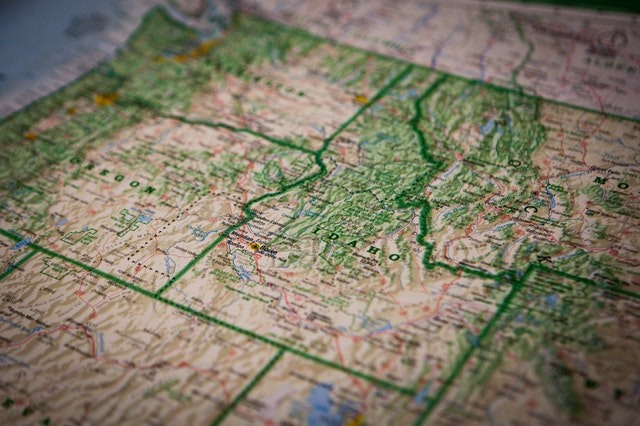The Unique Challenge of Territory Search

No doubt you have used “store locator” features on a website to locate the nearest drugstore or favorite restaurant chain. As a result, there are a number of good plugins to support store locators on WordPress-based websites. One plugin we have used on a few sites is Store Locator Plus. Tools like this are designed to help the website visitors find the CLOSEST store location to the address or zip code they enter, or is detected by their mobile phone. Plugins like this work on the assumption that all locations are acceptable and that distance is the primary factor used by the visitor to select a location. They use geographic algorithms to calculate the mileage between the visitor’s location and all possible store locations.
But consider that many businesses use the concept of an “exclusive territory” to determine which locations serve customers in which areas. Of our clients, that can include a manufacturer with reps assigned to cover a state or two, or a franchisor with franchisees assigned to a state, a city, or maybe an arbitrary selection of contiguous zip codes. In these cases, how can the manufacturer’s or franchisor’s website direct visitors to the location designated for a particular address? Consider the example where the state of Ohio is covered by a rep located in Cincinnati and the state of Pennsylvania is covered by a rep in Pittsburgh. A potential customer in Cleveland using a traditional store locator feature would find the Pittsburgh location closer, 134 miles, than the Cincinnati location, 248 miles. But such a referral would be counterproductive for the manufacturer and present a possible conflict of interest.
The search for a better solution to territory search: Dynamics Online faced this challenge recently in our design of a location search feature for System4, a facility services management franchisor with over 50 franchised locations around the US. We first explored the Store Locator Plus solution to see if it supported the territory concept, and in fact it did. But, unfortunately it supported only rectangular territories that can be specified by entering the corners of the rectangle as geographic coordinates of latitude and longitude. That did not come close to solving the location search problem for System4, whose franchisees cover lists of zip codes that form an irregular shape of territory.
See our ultimate solution on the System4 Locations page. This page illustrates the problem particularly well because it features our programmed zip code search, and below that, a traditional map of locations specified with pinpoint icons. The most accurate result comes when the site visitor enters his or her zip code and sees the one resulting address for the location that serves that area. In the case where no franchisor serves the entered zip code, the site displays System4’s corporate contact information. But the map below that also illustrates at a glance that they serve many metropolitan areas with a local franchisor.
Our solution involved designing a custom database that related individual zip codes to locations by ID number. The ID number relates to the existing ID number from the site’s existing map solution, so we did not need to recreate the database of location contact information. (Click on a map pin to see that information quickly.) We then prepared and imported the list of more than 10,000 individual zip codes and their corresponding location IDs that our client provided.
The result is an absolutely definitive and accurate result to deliver the location information to every website visitor. Find out more about how our custom programming solutions can solve your particular business problem.


